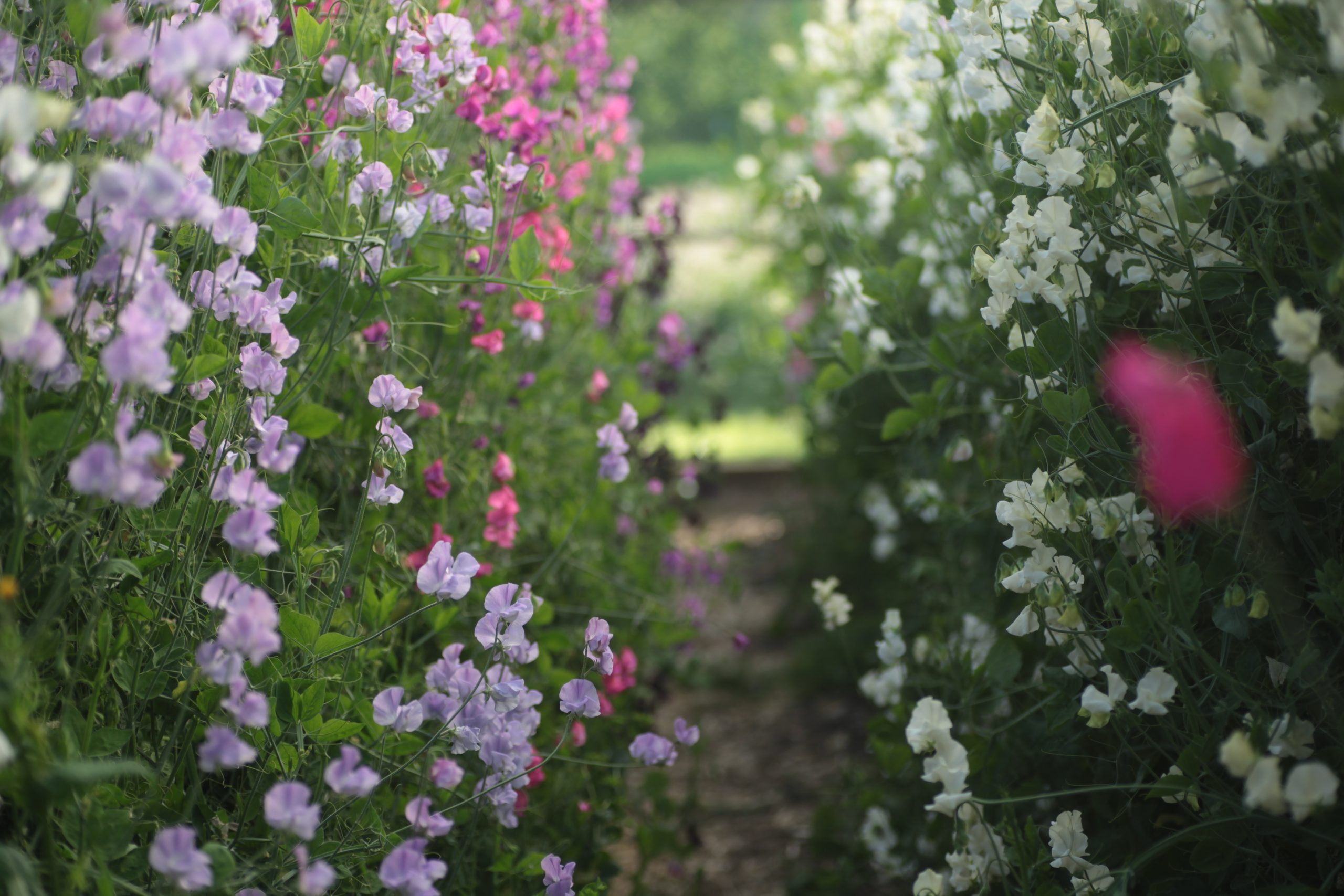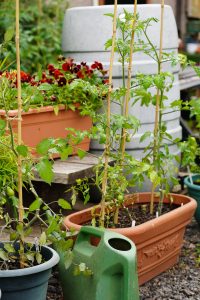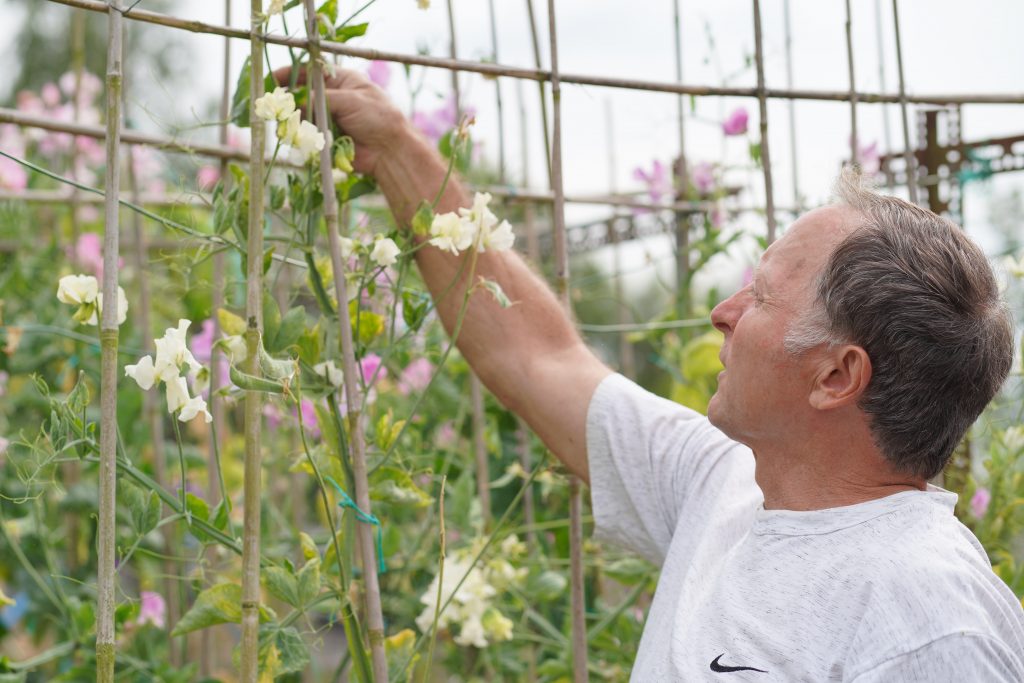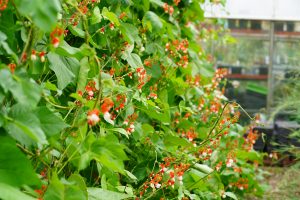July in the garden: Collect, Tidy And Enjoy Your Hard Work

Your garden will be in full bloom and the fruits of your labour will be ripening beautifully for the autumn harvest. It’s a great time to collect seeds for next year, to tidy up and ensure everything is well mulched and watered. Here are some tips for July, but remember, always step back and enjoy your hard work, a cool glass of your favourite tipple in the shade is great place from which to admire your patch!
Thin Out Your Apples
Your apple tree may be looking as though it has got a bumper crop, with loads of tiny apples, but if you thin them out by taking off any that look diseased or misshapen, and thin out clusters, you will end up with a crop of bigger, healthier apples.
 Dead-head Roses
Dead-head Roses
Deadheading roses tidies up and encourages those varieties that are going to flower again later in the summer and autumn. Not all varieties will flower again, but even if they don’t, they benefit from having brown flower heads taken off. For those that do repeat flower, deadheading is important, and you’ll see the effects in the next few weeks.
Deadhead Annual Daisies
Everyone will have tubs or hanging baskets containing cheerful big daisies such as osteospermums, but their first flush of flowers is probably over thanks to the very hot weather. If so, be quick to snip them off with secateurs to tidy up their appearance and encourage good second flowering later in the summer.
Collect Seed
A lot of your favourite border plants, such as aquilegias, will have finished flowering and produced prominent seed heads by now. It is easy to collect the seed to sow for new plants of your own, just snip off the stem and seed head, and put it in a paper bag. Put the bag in a dark dry place, and after a couple of weeks the seeds will have dropped out and you can collect them, put them in labelled bags, and keep them for propagating in the autumn.
Freeze Parsley
If you grow herbs, you’ve probably got a great crop of parsley at the moment. Remember it freezes brilliantly, so pick some and put it in a freezer bag to bring out in the winter.
Prune Philadelphus
The wonderful smelling philadelphus, or ‘mock-orange’ flowers are going over. Remember that all philadelphus should be pruned after flowering, so take out any dead wood and additional branches if necessary, to keep the shape. Pruning now enables the new growth to get established this year in order to produce flowers in the next. You might need stronger loppers or a pruning saw, rather than secateurs.
Get a Water Butt
At this time of year water can be in short supply for gardens, so install a water butt and ensure you don’t get caught out in August. Constant access to your own supply will be very satisfying, so make sure you’ve got one in place now, and that it’s filling nicely.
 Feed Those Tomatoes
Feed Those Tomatoes
Tomato plants are reaching the period when they are at their most hungry. They will definitely benefit from a weekly liquid feed, to help produce a good crop of juicy tomatoes in a few weeks. The same goes for cucumbers if you are growing them in your greenhouse.
Mulch Runner Beans
Runner beans are putting on lots of leafy growth at the moment but don’t forget that their roots like to be kept moist. To avoid the possibility of them drying out, and to encourage growth, give them a moisture-retaining mulch – either with compost, leaf mould, or rotting lawn mowings.
Fertilize Your Tubs
If you’ve got planted tubs or other containers, including hanging baskets, they will have been out for a few weeks now. They could well benefit from a pep up with some slow-release fertiliser – just add to the soil or compost away from the plant roots, and water well.
Divide Your Irises
Most irises grow from a corm or rhizome, which looks like a large, flattened bulb. As they get older the corms grow into clusters, which often produce lots of leaves, but few flowers. Now they have flowered you can dig them up and divide them. To do this cut the corms into bits with a knife, discard the old ones, trim the leaves, and replant the individual corms. Ensure they are partially covered by soil, but leave their tops showing so that the sun will ripen them.
Thin and Tidy Water Plants
Make sure you take dead flowers and foliage off water plants to avoid them decomposing in the water and causing cloudiness and other pollution. This is the time of year that water plants often need thinning – especially if you have fish – as they get very dense.
Keep Picking Sweet Peas
If you carry on picking sweet peas, you’ll encourage them to produce more flowers.

Trim Flowering Perennials
This is the time of year your garden can look a bit bedraggled. A good trim of dead flowers and dried-out foliage on those early and mid-summer flowering perennials will certainly help and will encourage some to produce some fresh flowers and foliage. This is especially relevant to plants in prominent positions such as in your pots and containers.
Mow with Care
This is the time of year to be careful with your mower. Mowing too hard, even if there are showers about, will cause your grass to brown off very quickly. Remember that the grass is not growing as quickly now as it was in early summer.
Prune Shrubs
This is the time to prune those shrubs that will develop new stems this year, on which their flowers will appear next year. (The other main group of shrubs are those that you prune in the spring that then produce new growth and flower at the same time.) The shrubs that should be pruned now will have finished their summer flowering and include attractive favourites such as deutzias and kolkwitzias. You want to cut out about a quarter or a third of the main stems, doing it in such a way as to preserve or improve the overall shape, and get rid of the oldest (thickest) stems.
Take Geranium Cuttings
This is the time of year to take cuttings from tender geraniums or pelargoniums so that you have a stock for next year.
 Pick Runner Beans
Pick Runner Beans
You may only have a small row or group of runner beans, so it’s even more important to pick them regularly, as this encourages the plants to produce more pods
Trim Wisteria
If you have a wisteria plant, it should be finished flowering, so this is the time of year to trim it. Trim back all of this year’s new growth – the new tentacle-like stems will be growing very rapidly – and this will encourage a good crop of flower for next year. If you need to do a harder prune of bigger branches, leave that until the end of the winter.
Water Fruit Trees
Make sure fruit trees against walls are kept well-watered while the fruits are still swelling.


















